Fix: ‘Valid ATAPI Device cannot be found’ CD\DVD is not recognized
ATAPI is a protocol in Windows that allows various types of device connections on your system. You will often face the “Valid ATAPI Device cannot be found” error when CD/DVD/Blu-ray drives are not recognized in File Explorer. This will cause the drive to be listed as “Unknown Driver” in the Device Manager. This error occurs due to outdated drivers that prevent the ATAPI Device from being configured.
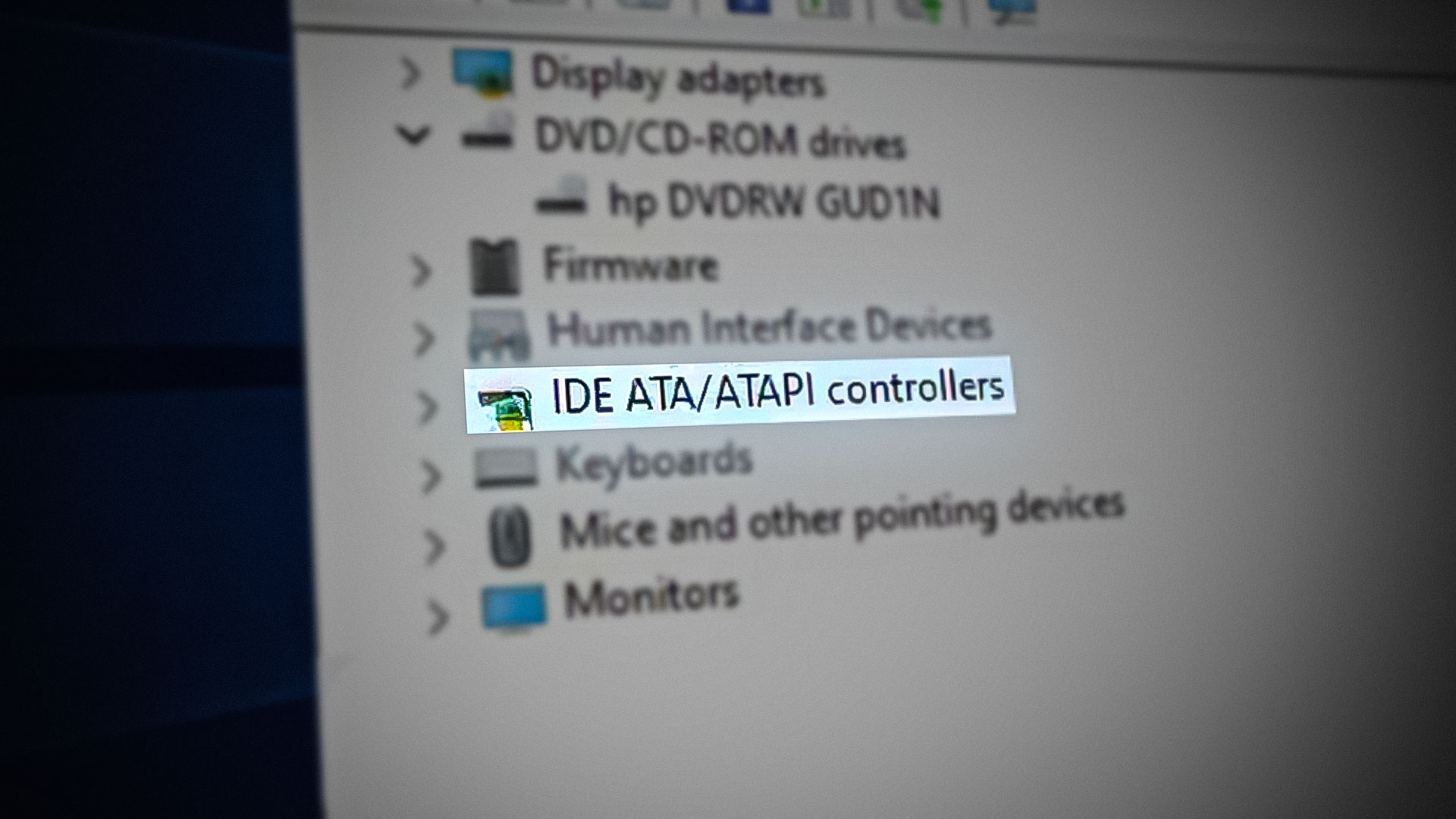
In this guide, we will show you how to fix the Valid ATAPI Device when it cannot be found in Windows.
1. Run the Hardware and Device Troubleshooter
A simple solution to this error is running the Hardware and Device troubleshooter. It is a built-in feature in Windows Control Panel that enables the device to detect and automatically repair the issue found on it. Run the hardware and device troubleshooter by following the steps listed below:
- Open the Run command by pressing the Win + R keys together.
- Type “control panel” in the search box and click the OK option.

Opening the Control Panel - View the icons in large by selecting “Large icons” in the View by panel.

Settings Icons at Large Font Size - Open the troubleshooter by clicking on “Troubleshooting.”
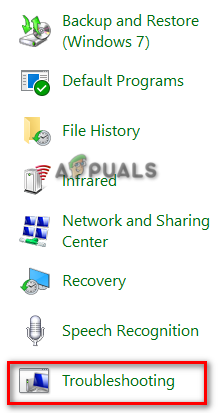
Opening the Troubleshooting page - Run the Hardware and Device troubleshooter by clicking “Configure a device” under Hardware and Sound.

Running Hardware and Device troubleshooter - After the troubleshooter has detected the problems, it will give helpful solutions.
- Perform actions according to the solutions.
- Open the Windows Start Menu by pressing the Win key.
- Restart your computer by clicking on the Power option and selecting “Restart”
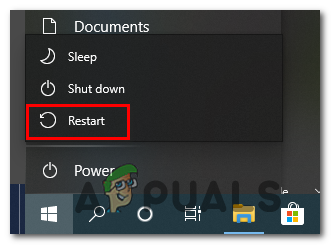
Restarting the Windows computer
2. Delete Corrupted Registry Entries
Corrupted Registry Entries will also cause issues with the ATAPI Device validity. Specifically, in this case, two Registry Entries “UpperFilter” and “LowerFilter” are responsible for this error. Therefore, you must delete them and prevent any type of Registry corruption which can cause this error to occur. Below are the steps for deleting the corrupted Registry Entries:
- Open the Run command by pressing the Win + R keys together.
- Type “regedit” in the search box and click OK to open the Registry Editor.

Opening the Registry Editor - Click “YES” on the User Account Control prompt (if you are asked for administrative permission)
- Now, paste the following path into the search box bar above and press the Enter Key.
HKEY_LOCAL_MACHINE\SYSTEM\CurrentControlSet\Control\Class\{4D36E965-E325-11CE-BFC1-08002BE10318} - On the right side of the panel, right-click on both the “UpperFilter” and “LowerFilter” Registry Entries one at a time.
- Delete the Entires by selecting the “Delete” option.

Deleting Registry Entry - Exit the Registry Editor, and restart your computer to make the necessary changes.
3. Update the Driver
An outdated Driver will impact the performance and stability of your system. Therefore, you must make sure that the currently installed DVD drivers on the system are up-to-date. You can update the drivers on the system by performing these steps:
- Open the Run command by pressing the Win + R keys together.
- Open the Device Manager by typing “devmgmt.msc” in the search box and clicking OK.
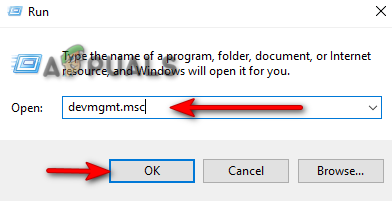
Opening Device Manager - Click on the “ DVD/CD-ROM drives” option.
- Update the Installed Driver by right-clicking on it and clicking on the “Update driver” option.

Updating the Driver - Click on the “Search automatically for updated driver software” option.
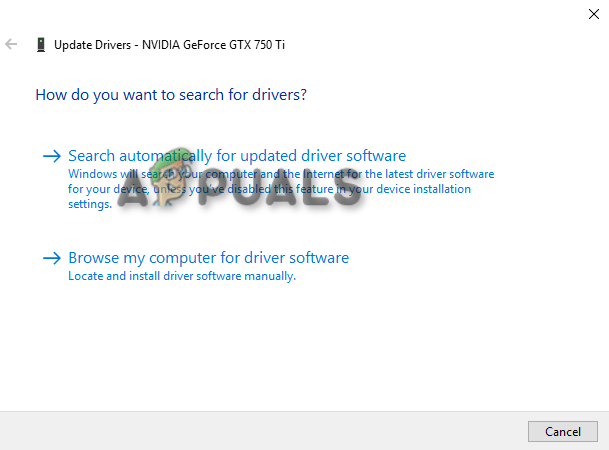
Selecting the Driver Updating method - After the driver has been updated and installed, restart your computer to apply the changes.
Manually updating the driver
- Open the Windows Start Menu by pressing the Win key.
- Type “cmd” in the Windows Search bar.
- Right-click on it and select the “Run as an administrator” option.

Running the Command Prompt as an administrator. - Find the Model Number of the driver by typing the following command in the Command Prompt and pressing the Enter Key:
wmic cdrom get name

Finding CD ROM Model Number - Copy the Model Number and open the Default Browser (for example Google Chrome).
- Search for the manufacturer’s website of the CD/DVD.
- Open the “Download and Support” or “Downloads” section to find the Driver.
- Search for the Model Number you copied from the command prompt.
- Download the latest driver according to the bit size of your Operating System (for example 64-bits).
- Click on the three dots on the browser and open the “Downloads” page.

Opening the Downloads tab - Locate the file by clicking on the “Show in Folder” option.

Opening file location - Install the driver on your device and restart your device when it is installed.
4. Run the System on Safe Mode
If the system continues to face this error in a Normal State, then you must reboot your system on Safe Mode. Using this mode, your system will be enabled to run with default programs and a minimal set of drivers, and will help you find the solution as well. You can run the System on Safe Mode as follow:
- Open the Run Command by pressing the Win + R keys together.
- Type “msconfig” in the search box and click OK to open System Configuration.

Opening System Configuration - Open the Boot tab and check the “Safe Mode” box.
- Click and select the “Minimal” option under Safe Mode.
- Set the “Timeout” as per your preference.
- Make the changes by clicking Apply and OK.

Booting System on Safe Mode - Restart your computer by selecting the “Restart” option on the System Configuration Prompt.
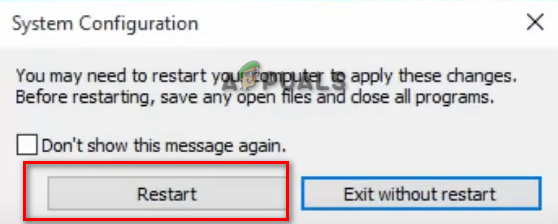
Restarting computer
5. Perform a Clean Boot and turn off the Services
If the error doesn’t occur in Safe Mode, then you must Perform a Clean Boot on your system. Performing a Clean Boot will boot the system on a minimal set of drivers and startup programs.
- After performing the clean boot, turn off the service interfering with the drive.
- Open the Run Command by pressing the Win + R keys together.
- Open Windows Services by typing “services.msc” in the search box and clicking OK.
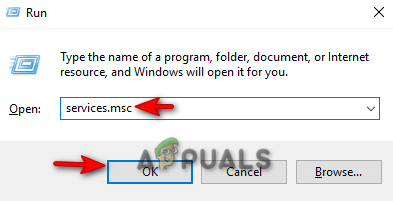
Opening the Windows Services - Now, disable each Service one by one and check which is preventing the Blu-Ray drive from being recognized.
- If you are using the “Asustek Lighting” Service, it will be the cause of the error.
- Right-click on the service causing the error, and select the properties option.

Opening the Service properties - Click on the Startup type drop many and select the “Disabled” option.
- Make the changes by clicking Apply and OK.

Disabling the service
6. Reinstall the Driver
If the error still persists, as a last resort, you must Reinstall the Driver. You can do that by performing the steps given below:
- Open the Run command by pressing the Win + R keys together.
- Type “devmgmt.msc” in the search box and click OK to open the Device manager.

Opening Device Manager - Click on the “DVD/CD-ROM drives“ option.
- Uninstall the Driver by right-clicking on it and clicking on the “Uninstall” option.
- Restart your computer and the system will automatically reinstall the missing driver.




